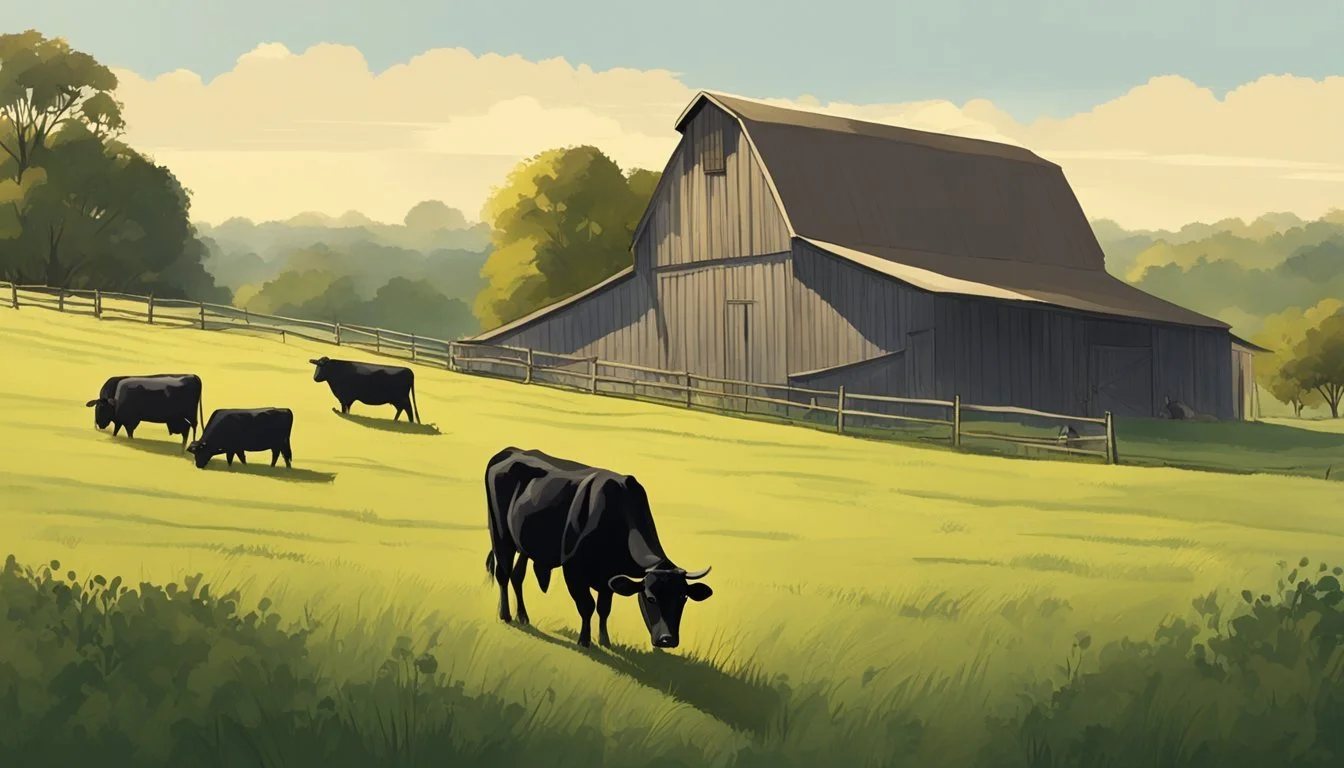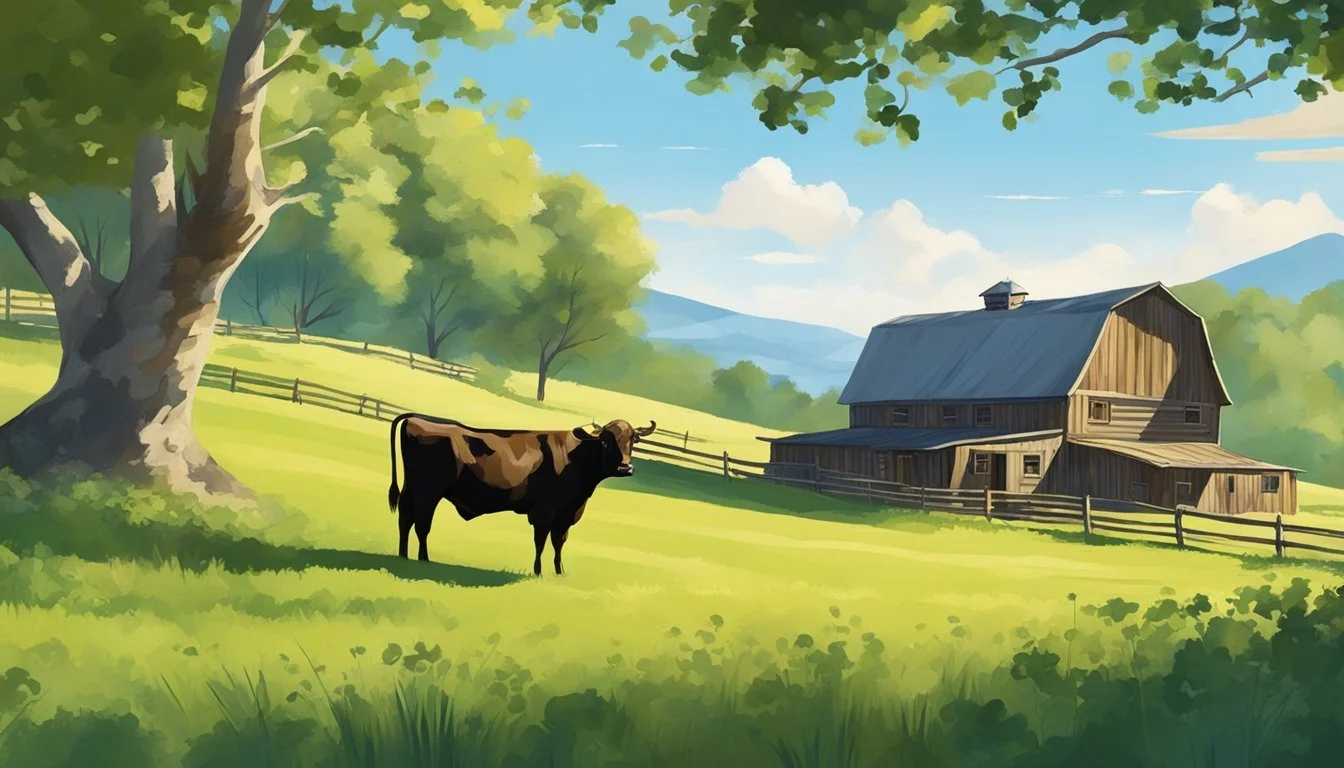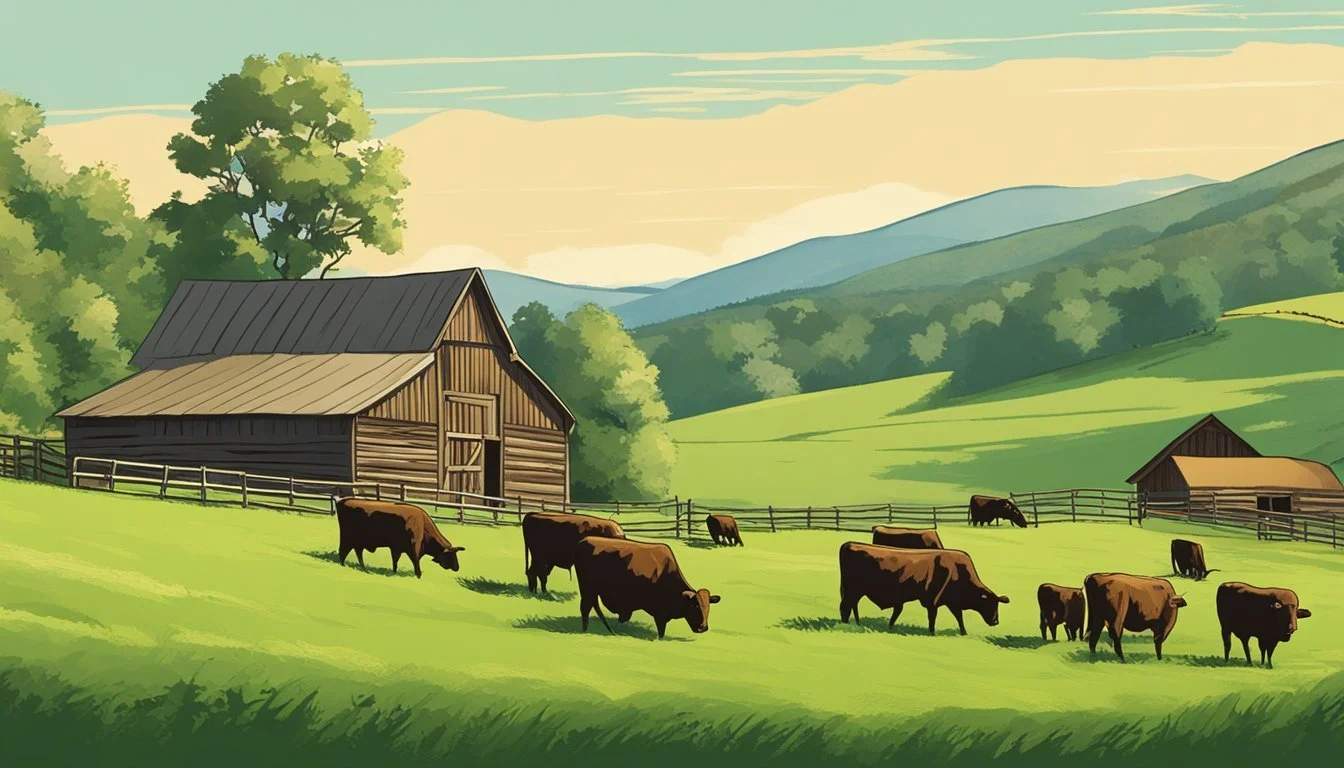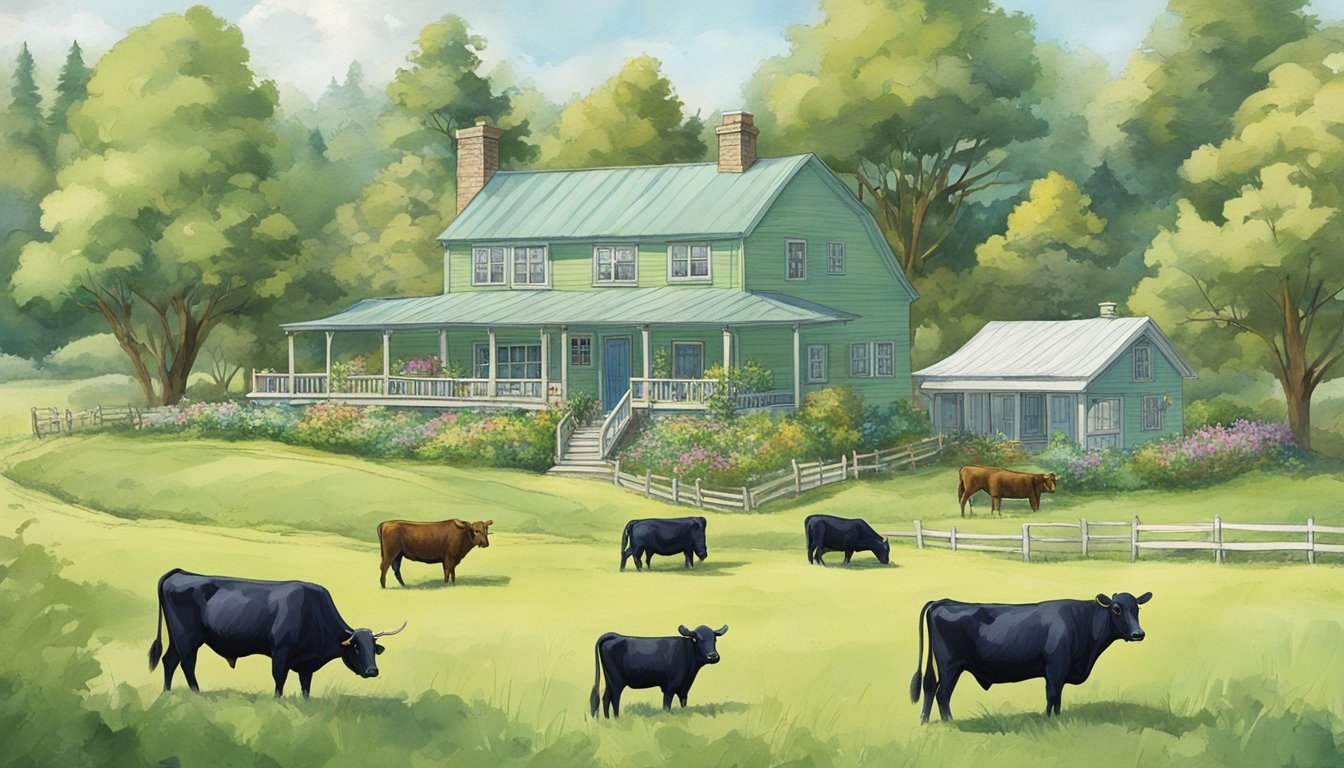Dexter Cattle as a Source of Homestead Income
Maximizing Profitability While Navigating Hurdles
Dexter cattle present an attractive option for those seeking self-sufficiency on their homesteads. They are a breed known for their smaller stature, which lends itself well to small-scale farming operations where space and resources might be limited. Dexters are often celebrated for their dual-purpose nature—they produce a reasonable quantity of milk while also being a source of quality meat. This versatility makes them an economical choice for homesteaders aiming to diversify their income streams.
The breed's hardiness and adaptability contribute to its growing popularity among farmers. Dexter cattle are capable of thriving in varying climates, and they manage well on both pasture-based diets and when supplemented with grain. Their size and efficiency appeal to those with limited acreage, as they require less feed and space than larger cattle breeds. This means lower maintenance costs and the potential for higher profit margins.
However, prospective breeders should be aware that, like any livestock venture, rearing Dexter cattle comes with its own set of challenges. The initial costs include purchasing high-quality breeding stock and setting up appropriate fencing and shelter. While Dexters are generally known for their ease in handling and calving, routine care and health management are crucial for maximizing their productivity and ensuring a successful homestead operation.
History and Origin of Dexter Cattle
Dexter cattle, a small breed with a long history, trace their lineage to Ireland and reached American shores to influence homestead farming.
Native Home and Importation to America
Native Home: Dexter cattle originated in Ireland during the early 19th century. They hail from the rugged landscapes of County Kerry and County Tipperary, where they were developed by small landholders for milk and meat production on limited acreage. It was the breed's hardiness and dual-purpose characteristics that catered to the needs of these small-scale farmers. Irish records marked the inception of organized recognition with the establishment of the Dexter herd book by the English Kerry and Dexter Cattle Society in 1892.
Importation to America: Dexter cattle were first introduced to America in the early 20th century. Their arrival provided small homesteads across the country with a versatile breed capable of thriving under diverse conditions. The American Dexter Cattle Association, formed subsequently, played a pivotal role in preserving the breed standard and promoting its benefits to American farmers. The history of Dexter cattle in the United States is one of adaptability and growth, as they've become a favored choice for sustainable and efficient homestead livestock.
Breed Characteristics
Dexter cattle possess distinctive traits that contribute to their status as an outstanding dual-purpose breed, ideal for both meat and milk production, while their compact size makes them particularly suitable for small farms.
Size and Weight
The Dexter breed is known for its small stature, typically standing at about half the height of a Hereford and a third of a Friesian, making it the smallest European cattle breed. Mature cows generally weigh about 600 pounds, and bulls are heavier, averaging around 900 pounds.
Color Variations
Dexter cattle exhibit three primary color variations: red, dun, and black. A less common color is white, which may appear in some individuals. These color variations are both a hallmark of the breed and an aesthetic attribute that may appeal to farmers and breed enthusiasts.
Horns and Polled Nature
Dexters may be naturally polled (hornless) or have horns. The horned variety has relatively short, curved horns that add to the breed's rustic appearance. Whether polled or horned, this characteristic does not significantly impact the breed's utility on a homestead.
Cattle Breeds Comparison
In a homestead setting, Dexter cattle offer unique advantages and limitations when compared to other dairy and beef breeds. Assessing each breed in terms of dairy and beef production capabilities allows for informed decisions tailored to a homestead's specific needs.
Dexter vs. Other Dairy Breeds
Dexter cattle are known for their versatility in providing both beef and dairy. When compared to specialized dairy breeds such as Holsteins, Jerseys, and Guernseys, Dexters produce less milk, averaging up to three gallons per day. Holsteins, on the other hand, lead the dairy breed category with large milk yields, often producing around 9 gallons per day. Jerseys are appreciated for their richer milk, high in butterfat, while Guernseys produce milk with a good balance of quality and quantity.
Dexter: Up to 3 gallons/day, Smaller frame
Holstein: Up to 9 gallons/day, Larger frame
Jersey: High butterfat content, Medium frame
Guernsey: Balanced quality and quantity, Medium frame
Dexter vs. Other Beef Breeds
Regarding beef production, Dexter cattle are smaller in size, yielding less meat than conventional beef breeds like the Angus, which is renowned for its marbling and meat quality. However, Dexters are known for their lean and tender beef. They are well-suited for smaller homesteads due to their more manageable size and efficient resource utilization. Angus cattle, by contrast, are larger and require more space and feed but offer a higher beef yield suitable for large-scale production.
Dexter: Lean and tender beef, Efficient on small acreage
Angus: Quality marbling, Requires more space and feed
By considering these characteristics, homesteaders can choose the right breed according to their land resources, market demands, and personal preferences.
Advantages of Dexter Cattle for Homesteaders
Dexter cattle offer homesteaders a unique combination of size, efficiency, and versatility, making them a valuable asset for those seeking sustainable livestock.
Size and Efficiency
Dexter cattle are renowned for their smaller stature, which allows them to thrive on less pasture than larger breeds, proving to be a more efficient use of land. This characteristic notably benefits homesteaders with limited acreage. Due to their size, Dexters require less feed to maintain healthy weights, which translates into cost savings on feed expenses. With a higher meat conversion rate than many dairy breeds, a Dexter cow can yield over 60% of its body weight in meat.
Dual-Purpose Use
As a dual-purpose breed, Dexter cattle serve homesteaders by providing both meat and milk. Their milk has a high butterfat content, and they are known to produce a sufficient quantity for a family's needs without the excess of larger dairy breeds. Furthermore, the meat from Dexter cattle is well-marbled and flavorful, which places these bovines among the preferred options for homesteaders looking to maximize their return on investment from a single animal.
Hardiness and Longevity
Dexter cattle exhibit a remarkable hardiness, adapting well to various climates, and they possess a notable longevity. A healthy Dexter cow can continue calving up to approximately 18 years of age, making it a long-term contributor to the homestead's productivity. This breeds resilience and long productive life span ensure a steady supply of meat and milk over an extended period, thereby enhancing the overall self-sufficiency of a homestead. Their known hardiness also translates into fewer veterinary costs, another plus for the budget-conscious homesteader.
Animal Management
Effective management of Dexter cattle is key to leveraging their potential as a source of homestead income. This section focuses on the animals' temperament and ease of handling, their grazing behaviors and the importance of pasture management, as well as their notable adaptability to various climates.
Temperament and Handling
Dexter cattle are known for their docile temperament, which makes them easier to handle compared to some larger breeds. They respond well to regular, gentle interactions, making them suitable for small-scale farmers and homesteaders. However, consistent training and handling from a young age are crucial to maintain their ease of handling.
Grazing and Pasture Management
When it comes to grazing, Dexter cattle exhibit efficient pasture utilization. They are known to thrive on pasture-based diets but can also benefit from grain supplementation when necessary. Pastures should be well-managed to ensure adequate regrowth and to maintain the nutritional needs of the herd. Rotational grazing systems can optimize pasture longevity and provide the cattle with consistent forage.
Grazing Rotation: Implement a schedule to prevent overgrazing.
Pasture Recovery: Allow time for pastures to recover before reintroducing cattle.
Supplemental Feeding: Provide supplements during low forage periods.
Climate Adaptability
Dexter cattle exhibit a remarkable ability to adapt to various climates, from hot and humid to cold and wet conditions. Their hardiness makes them ideal for diverse environmental settings, ensuring year-round outdoor grazing in many regions. Adequate shelter and clean water are vital to support them in extreme weather conditions.
Shelter Requirements: Protection from extreme elements helps maintain herd health.
Water Accessibility: Ensure a consistent supply of fresh water regardless of climate.
Reproductive Traits
Dexter cattle are recognized for their reproductive efficiency, which is an asset for homestead income generation. They exhibit notable fertility and calving ease, accompanied by strong maternal instincts, making them desirable among small-scale farming operations.
Fertility and Calving
Dexter cattle have a high fertility rate, which boosts productivity for homesteaders. Their calving process usually goes smoothly due to the breed's modest size. Gestation lasts approximately 283 days, and farmers should anticipate calves within a 10-day window around the due date. It's noteworthy that bull calves tend to have a slightly longer gestation period than heifer calves by about 1-7 days.
Aspect: Bull Calves, Gestation: 284-290 days, Due Window: +/- 10 days
Aspect: Heifer Calves, Gestation: 276-283 days, Due Window: +/- 10 days
Nursing and Maternal Instincts
Dexter cows are reliable nurse cows and exhibit strong maternal instincts. They are usually attentive to their calves and provide ample milk for their nourishment. As mothers, Dexter cattle are protective and ensure their calves receive adequate feeding to thrive, which contributes to the overall resilience and sustainability of the breed on a homestead.
Nursing Duration: Calves typically nurse for 6-9 months.
Maternal Behavior: Dexter cows are known for being nurturing and protective.
Through their reproductive traits, Dexter cattle offer homesteaders a dependable source of income with the challenge of ensuring timely and attentive care during the calving and nursing periods.
Income Opportunities
Dexter cattle offer a viable source of income for homesteaders through meat and milk production, providing quality products with unique characteristics due to their breed's inherent traits.
Meat Production and Marketing
Dexter cattle produce high-quality beef with excellent marbling, which is a sought-after characteristic in beef products. Their smaller size results in a more manageable meat quantity for direct consumer sales. Homesteaders can market their meat as grass-fed beef, appealing to consumers looking for healthier and more sustainable options. The ability to thrive on pasture-based diets or grain supplementation gives flexibility in feeding practices to enhance the beef's quality and taste.
Meat Quality: Superior marbling and taste.
Feeding Options: Grass or grain supplementation for taste and size preference.
Marketing Strategy: Position as sustainable, healthier beef option.
Milk Production and Dairy Products
While not as prolific as some larger dairy breeds, Dexter cattle are efficient milk producers, often yielding about 1.5 to 2.5 gallons of milk per day. Their milk is characteristically rich, with a higher butterfat content compared to standard dairy breeds, making it ideal for homesteaders to produce value-added dairy products such as cheese, butter, and yogurt.
Milk Production: Approximately 1.5 to 2.5 gallons of rich milk daily.
Butterfat Content: Higher than average, boosting dairy product quality.
Dairy Products: Potentially lucrative niche for cheese and other dairy products.
Homesteaders with Dexter cattle can capitalize on these opportunities to create a sustainable and profitable business, meeting the market demands for quality meat and dairy while managing a farm with a smaller cattle breed.
Challenges in Dexter Cattle Farming
Breeding and raising Dexter cattle as a homestead income source present specific challenges. These include navigating market competition, setting up proper handling facilities, and managing breed-specific health and genetic issues.
Market Competition and Breeder Networks
One of the primary hurdles for Dexter cattle farmers is the intense market competition. Established breeders often dominate the market, making it challenging for newcomers to gain recognition and sell their cattle at premium prices. Breeder networks are vital for success, yet they can be exclusive and difficult to penetrate. Farmers must focus on building relationships and differentiating their herd to succeed.
Handling Facilities and Veterinary Care
Handling facilities must be tailored to suit Dexter cattle's smaller size compared to standard cattle breeds. Specialized equipment and enclosures lead to additional investments. Furthermore, finding a veterinarian experienced in Dexter cattle can be difficult in certain areas, impacting routine health checks and emergency care.
Handling considerations:
Scaled-down chutes and pens
Investment in breed-specific equipment
Veterinary care challenges:
Limited access to Dexter-experienced veterinarians
Proximity to animal health facilities
Health and Genetic Considerations
Health management and genetic diversity within Dexter cattle pose challenges. The breed is prone to certain health issues like chondrodysplasia and pulmonic stenosis. Calving difficulties, although less common, can still occur and require vigilant monitoring and intervention. Breeders need to engage in responsible breeding practices to manage these concerns.
Health issues to monitor:
Chondrodysplasia (a genetic disorder affecting bone growth)
Pulmonic stenosis (a heart valve defect)
Genetic challenges:
Promoting genetic diversity to prevent inbreeding
Implementing careful selection in breeding programs
Sustainability and the Homestead Ecosystem
Dexter cattle hold a pivotal role in the interplay between sustainability and homesteading productivity. They are adept at enhancing soil fertility while aligning with eco-conscious agricultural practices.
Environmental Impact and Soil Fertility
Dexter cattle contribute significantly to the sustainability of a homestead ecosystem through their pasture-based diet. Pasture-raised Dexter cattle help maintain the balance of ecosystems by grazing, which can lead to improved soil fertility. They naturally fertilize the soil through their manure while grazing, which can reduce the need for chemical fertilizers.
The preference for Dexter cattle in pasture systems stems from their ability to thrive on lower quantities of hay and other supplemental feeds. They often are raised on grass alone, which is a more sustainable option compared to grain-finished cattle, as it relies on the natural growth of grass without the need for energy-intensive inputs.
Their compact size means they require less space and can be more efficiently managed on small plots of land, reducing the homestead's environmental impact. Dexter cattle's grazing helps to control plant growth, encouraging a diversity of forage species which supports a healthier pasture ecosystem and, in turn, the sustainability of the homestead.
Future Prospects and Community
As Dexter cattle gain recognition for their adaptability and efficiency, they are increasingly becoming an asset to homesteaders and hobby farmers seeking sustainable income sources and community building.
Growing Popularity Among Hobbyists and Preppers
Dexter cattle are becoming a preferred choice among hobbyists who appreciate their manageable size and gentle nature. This breed presents a less intimidating option compared to larger cattle breeds, making them suitable for smaller landholdings. Their popularity is also rising among preppers due to Dexter cattle's hardiness and ability to provide a self-reliant food source.
Ease of Care: Dexter cattle's low maintenance needs align well with the lifestyle of hobbyists.
Resource Efficiency: They require less pasture and food compared to larger cattle, which appeals to preppers preparing for resource scarcity.
Cultural and Artisan Impact
The community around Dexter cattle is fostering a revival in artisan crafts, such as cheesemaking and leatherworking, driven by homesteading values. These small-scale cattle are not only a source of milk and meat but also raw materials for craftsmen and artisans to create unique, high-quality products.
Homesteading: Dexters are contributing to sustainable living practices, promoting self-sufficiency among homesteaders.
Community Networks: Dexter cattle owners often form tight-knit groups to share resources, breeding stock, and expertise, further enriching local cultures and economies.










